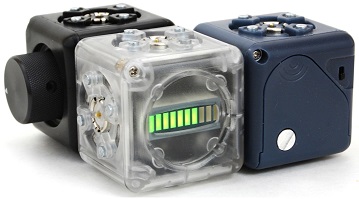For a long time I had not been so pleasantly surprised by a new robotic solution. The Cubelets come from a project of the Carnegie Mellon University and are a really effective and original way to discover and understand robotics.
First, what is a robot? A simple and general definition is based on the paradigm Sense-Think-Act. Discovering how these abstract concepts works when you know nothing about electronics or programming is quite hard? The Cubelets solve the problem for you.
A Cubelet is a small cube of 4.5 cm square can be assembled by magnetisation to another Cubelet on any of its faces. It cannot be simpler. There are different types of Cubelets: the Cubelets to sense (light sensor, temperature sensor…), the Cubelets to act (drive, rotation), the Cubelets to modify information (inversion, limitation, threshold…) and finally the battery Cubelet to power the robot. Once you understand this concept (which is easy because they have a color depending on type), just assemble the Cubelets in a certain order to form a robot. The order and the nature of the Cubelets used to create the robot influence the behavior. This is simply brilliant. You just have to think what Cubelet you’ll use and how to order them together to obtain a more or less complex behavior.
The Cubelets are ideal for the k-12 level. They force us to think and to explain why we get this or that behavior. Many examples are available to organize exercises and challenges. No need of equipment other than Cubelets, they are self-sufficient.
I told you it was a good idea.

